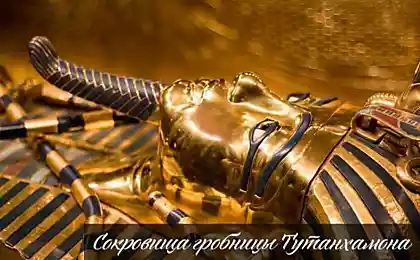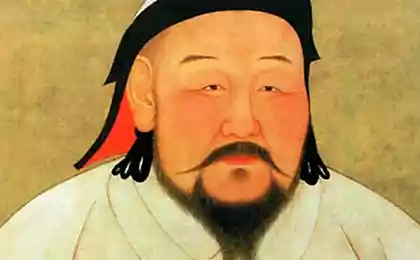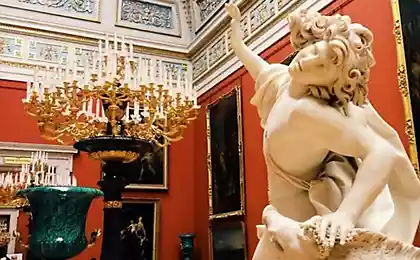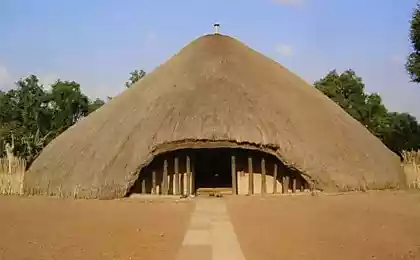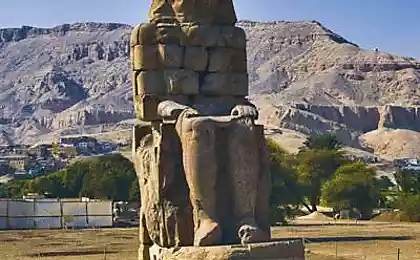686
The opening of the tomb of Tamerlane—truth and fiction

On the night of 20 June 1941, Soviet scientists had discovered the tomb of Timur (Tamerlane). Later this event has spawned all sorts of myths. According to one popular pseudo-scientific version, it was the opening of the burial was the cause of the beginning of the great Patriotic war. Now to understand that, where truth and fiction in this story of great interest to archaeologists, quite difficult. Samarkand Excavations in the area of the mausoleum Gur-Emir in Samarkand began in early June 1941. There are several versions that explain the reason for the research. According to one, study the possible burial site of Timur took place in the framework of the ambitious project of exhuming the tombs of famous historical figures. Back in the 1930-ies was created a special Commission, whose purpose was the identification of famous historical figures. So, in 1936 it was made the opening of the sarcophagus of Yaroslav the Wise. The study of ancient tombs was continued after the war. The studies involved well-known Orientalists and anthropologists. According to another version, the study of the tomb of Tamerlane was an initiative of Joseph Stalin. Produced in the course of the expedition findings were to be presented at the exhibition dedicated to the life of the famous conqueror. According to another less plausible version, excavations were conducted in search of gold, which is so needed at the time the Soviet state. Another version States that the study of the tombs was connected with the incident near the mausoleum of the accident during the construction of the hotel "Intourist". Water began to enter the tomb, which could result in the loss were there of the remains and objects.
According to several versions that existed at the time, Tamerlan's bones could be located in his native village of Kesh (now Shahrisabz, Uzbekistan) or in Samarkand. She and the other version was convincing enough. Anyway research began in Samarkand in the mausoleum Gur-Emir.
The Mausoleum Gur-Emir
The mausoleum of Timur the Great conqueror, who defeated the Golden Horde, died in February 1405, during a trip to China. Timur was 68 years old. According to sources, his body was embalmed and laid in a coffin of ebony, upholstered in silver brocade. As scientists have found that Tamerlan was brought to the mausoleum of Gur Emir, the construction of which in that period had not yet ended. The construction of the mausoleum began in 1403. He was in the South-Eastern part of medieval Samarkand. Initially, there were plans to create a center of Islamic education, but later this place was built a mortuary complex.
Later it was completed by Timur's grandson Ulug-Bek. That the search is conducted in the right direction, archaeologists have learned, when out of the marble sarcophagus was removed the remains of the youngest son of the conqueror, Shah Rukh. At a considerable depth was found a skeleton of a senior Timur's son, Miran-Shah. After this was discovered the crypt of Timur's grandson Ulug-Bek, who was killed and beheaded. It became clear that this was the family crypt of the Timurids.
The remains of Timur In the study of Timur's tomb was attended by several famous scholars, among whom was the orientalist A. A. Semenov, anthropologist M. M. Gerasimov. The group also included Tajik writer S. Ayni. The expedition was headed by the future academician and President of the Academy of Sciences of Uzbekistan, tashmuhamed Kar-Niyazov. The remains of Timur were under a large jade plate with an inscription-epitaph. It was split. Legend has it that the tombstone was brought to the Persian warlord Nadir Shah, who used a tombstone as a step in front of the throne. After that, the Iran earthquake, and the Shah himself began to pursue the disease. Nadir Shah decided to return the plate in place, but when transporting it broke apart.
The appearance of Timur, reconstructed mm Gerasimov
During excavations under the slab was discovered a thick layer of ganch (alabaster). Under it were found stacked next to five stone slabs. The marble sarcophagus was the wooden coffin on which were the fragments of solid matter. The cloth was embroidered with gold and silver threads. Some preserved fragments of the cloth were able to distinguish ancient writings. The coffin was well preserved. It has been found reinforcing boards and props. Under the lid of the coffin was found the skeleton. Once it became clear that the remains of Timur. One of his legs was shorter than the other. The lower calyx of the right leg is fused with the lower epiphysis of the femur. It is known that Timur was lame in one leg. In the Persian sources became widespread nickname Timur – Tamerlane (the Iron Lame). The study of Timur's remains showed that his height was 172 cm, It was a strong, strong man. The opening of the grave ended the evening of 21 June 1941. The skull of the conqueror remained bad due to the presence of water in the sarcophagus, although the skull was the remains of hair. Interestingly, Timur was not buried in the savanna, like Shahrukh, but in a coffin, which, according to Gerasimov, shall be in a form of modern tombs. The poor preservation of the remains did not prevent the anthropologist to restore the appearance of Timur. Tamerlan's head was put into a wooden box and taken to Moscow. About any treasures found in the mausoleum, were not reported. I must say that it was not the first opening of the tomb. The burial was opened in the early fifteenth century by order of his son, Shah Rukh, and then a few years after the death of Ulugh beg.
The legend of Timur's tomb
A lot of myths about the tomb is connected with the name of Malik Kayumov, a cameraman who worked in 1941 at the Tashkent film Studio. In the 2004 TV film "the Curse of Timur", in which the Uzbek operator told about the opening of the tomb. Kayumov was of the opinion that the excavations in the mausoleum led to the beginning of the great Patriotic war. According to him, there was a curse of Tamerlan: whoever opens the tomb would unleash a major war. When Timur's remains were reburied in late 1942, Soviet troops began to win the battle of Stalingrad. Malik Kayumov claimed that the remains were reburied after he spoke about the curse has not yet received the title of Marshal of the Soviet Union Georgy Zhukov. According to one legend associated with the opening of the tomb, during the work there have been a number of strange events. Suddenly stopped working the winch to raise the slab of the sarcophagus, turn out the light. Kayumov also told about the meeting of a group of archaeologists with three elders who tried to persuade the scientists to unearth the tomb, showing them some sacred book. According to Kayumov, they disappeared after the burial was opened. In response to the statement Kayumov writer Aini's son said that together with his father he was also present during the excavation. In his diary there was also a mention of elders. Aini said Kayumov did not know the Tajik language, and the elders turned to the group that is in Tajik, therefore, to understand what they discussed with them the writer, could not. According to Aini's son, the elders showed scientists a book of local legends "Gangname", published not antiquity, and in the XIX century.
source
Source: /users/87








